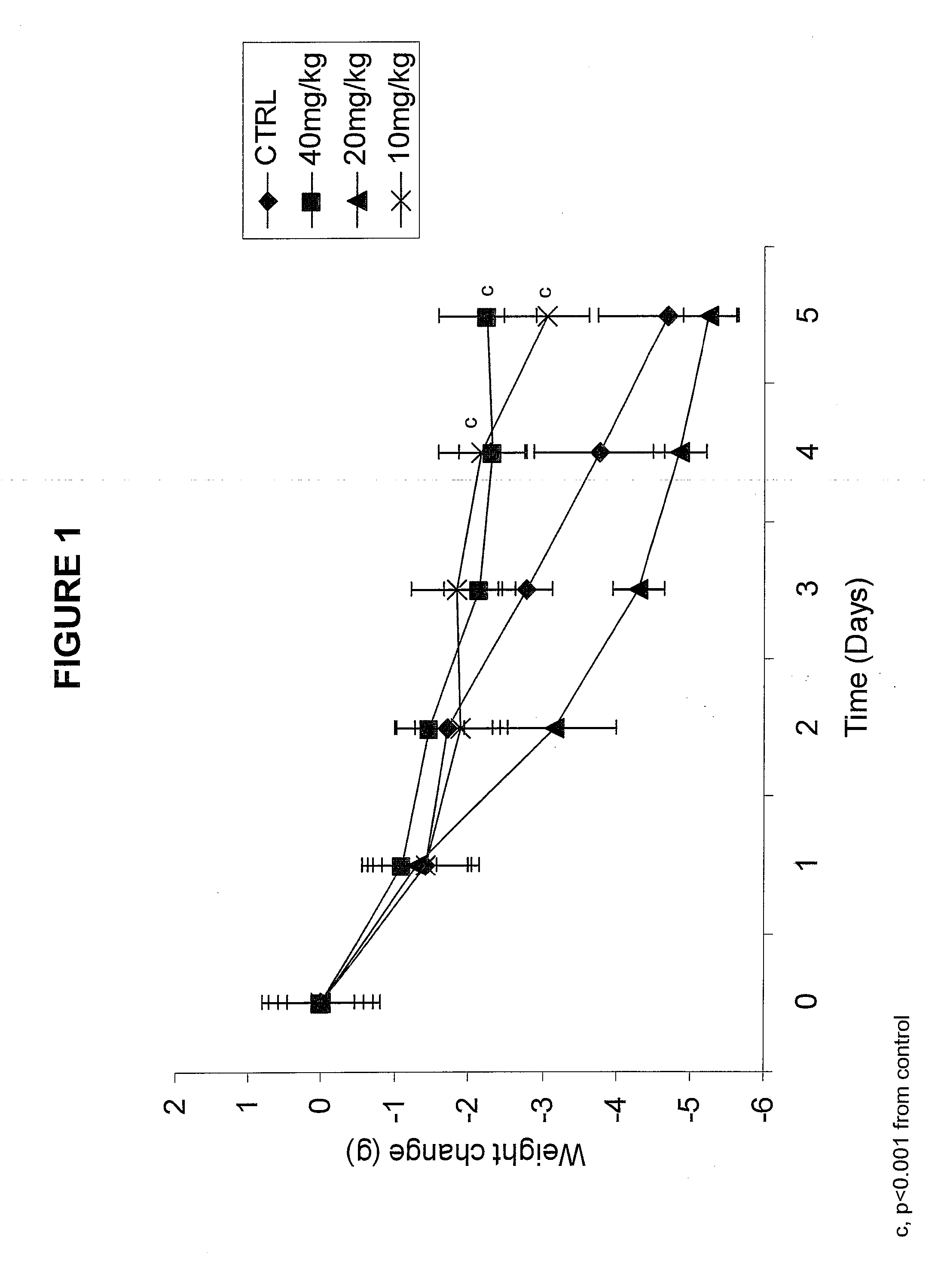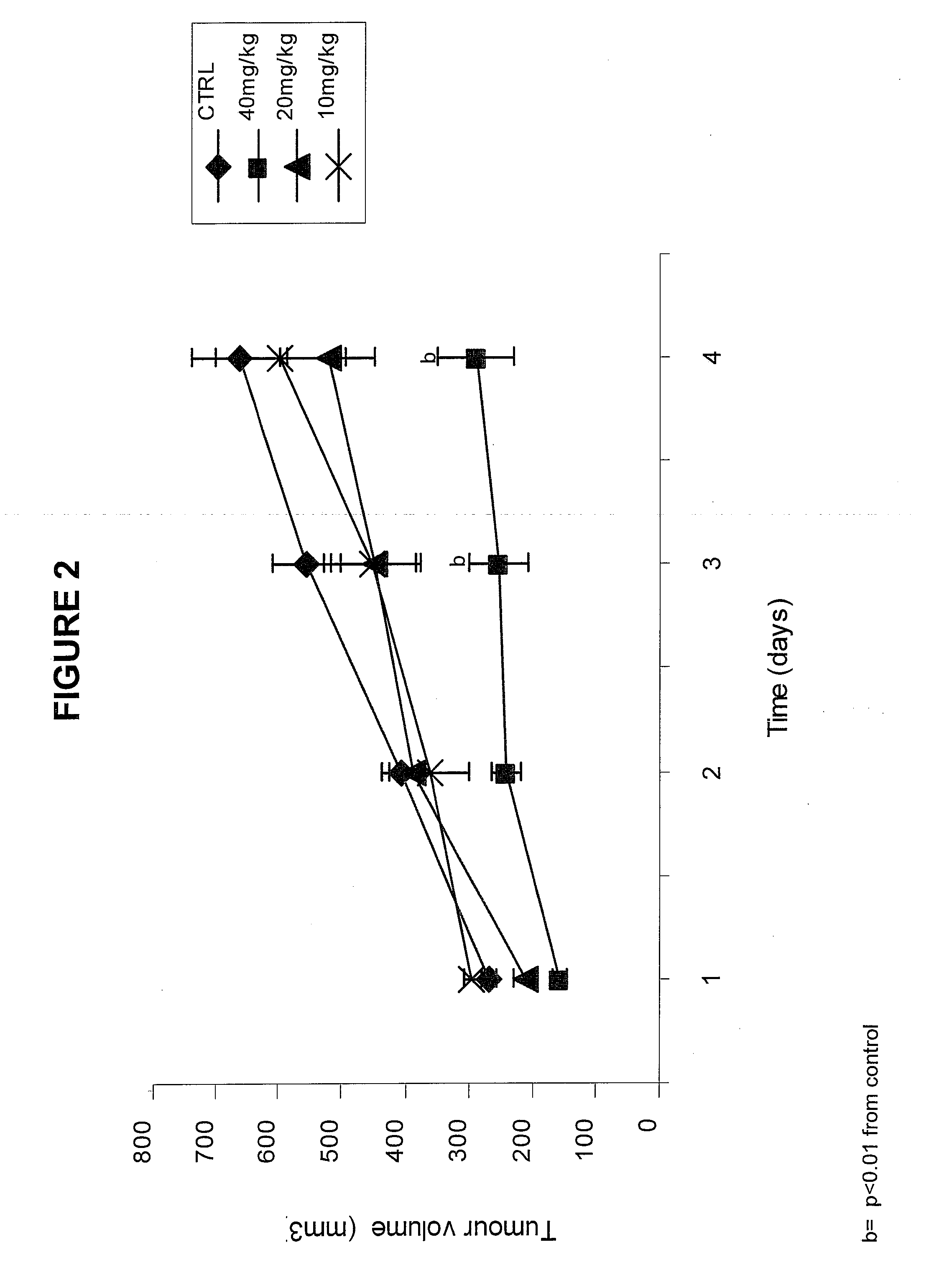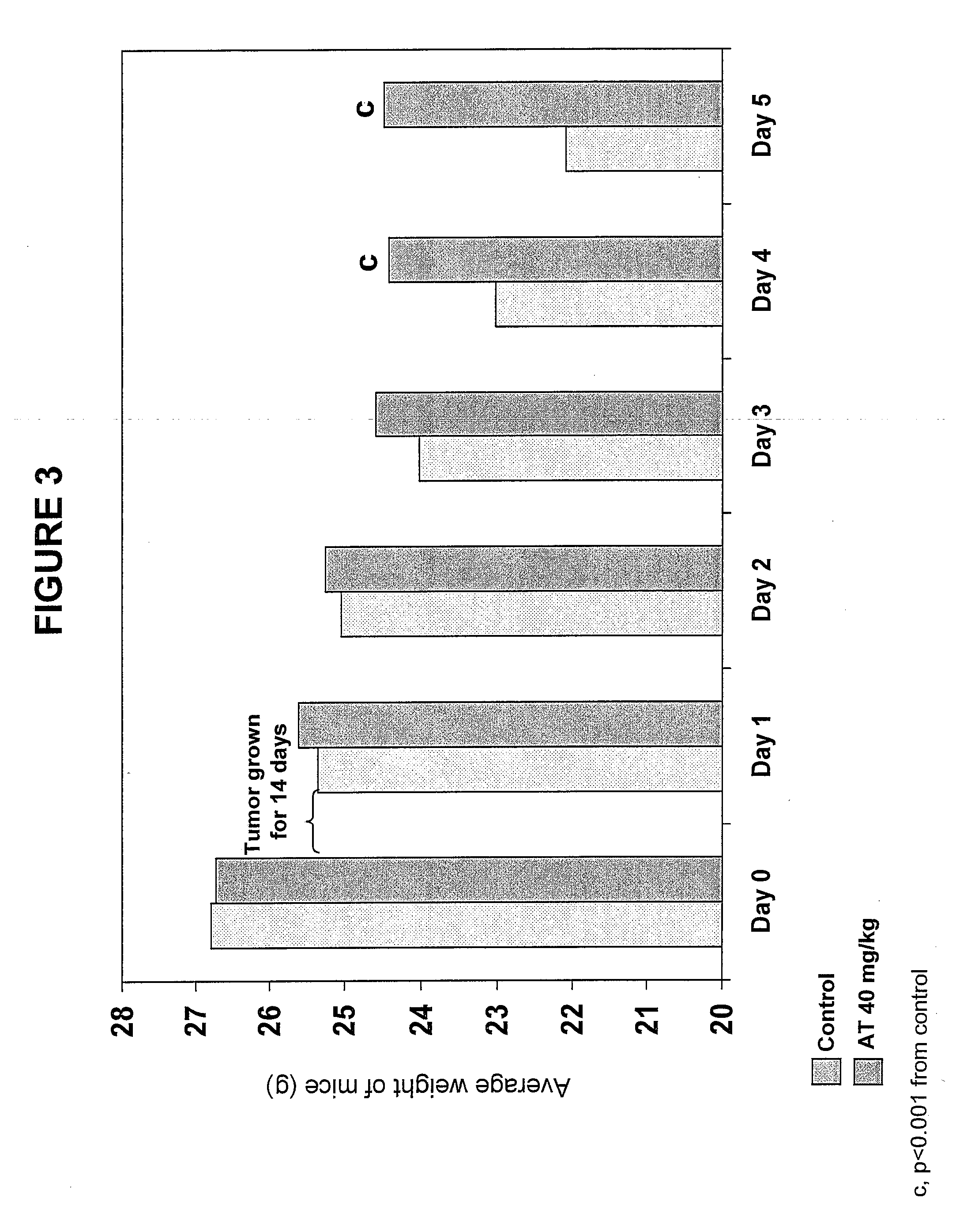Method and Means for the Treatment of Cachexia
a cachexia and treatment method technology, applied in the field of treatment of cachexia, can solve the problems of negative nitrogen balance, and accelerated protein degradation and hypercatabolism
- Summary
- Abstract
- Description
- Claims
- Application Information
AI Technical Summary
Benefits of technology
Problems solved by technology
Method used
Image
Examples
example 1
Treatment of Cachectic Mice with Alpha-Trinositol
[0158]Materials. Alpha-trinositol (1-D-Myo-inositol 1,2,6-triphosphate) was prepared according to U.S. Pat. No. 4,777,134. In a glass ampoule a stock solution was prepared by dissolving 1 g of alpha-trinositol in saline to a total volume of 10 ml. The stock solution was stored in a refrigerator for use within 24 hrs.
[0159]Animals. Pure strain male NMRI mice (average body weight 25 g) were transplanted with fragments of the MAC16 tumour subcutaneously into the flank by means of a trochar, selected from donor animals with established weight loss (Bibby M C et al., Characterization of transplantable adenocarcinoma in the mouse colon producing cachexia in the recipient animals. J Natl Cancer Inst 78 (1987) 539-546). Transplanted animals were given a rat and mouse breeding diet (Special Diet Services, Witham, UK) and water at lib. Weight loss was evident 10 to 12 days after tumour implantation. Just prior to the development of weight loss ...
example 2
Effect of Cachexia Treatment on Body Composition
[0164]At the end of the treatment described in Example 1 the mice were sacrificed, and their body composition was analyzed. The results are given in Table 1. They demonstrate that the method of the invention not only conserves the lean body mass in the animals but that it is even increased in relative as well as in absolute terms. The reduction of lean body mass is normally observed in cachectic patients and is a significant cause of morbidity. No significant change in water content was observed.
TABLE 1Body composition (% by weight) of cachectic MAC16micealpha-Trinositol(mg / ml)WaterpFatpLean massp067.8 ± 1.2—6.1 ± 2.1—26.1 ± 1.6—1068.0 ± 2.0NS4.9 ± 2.3NS27.1 ± 3.0NS2068.1 ± 1.7NS3.3 ± 0.50.0128.6 ± 1.70.054065.6 ± 1.7NS3.7 ± 1.90.0530.7 ± 2.50.01Values are mean ± SD;p values are from 0AT.
[0165]The absolute changes from controls are given in Table 2.
TABLE 2Body composition of cachectic MAC16 mice,absolute fat and lean mass changesalpha-...
example 3
In Vitro Inhibition of PIF (Proteolysis Inducing Factor) and Angiotensin II with Alpha-Trinositol
[0166]To investigate the mechanism by which AT protects lean body mass in cachexia, further experiments were carried out in vitro using murine myotubes as a surrogate model of skeletal muscle. Incubation with either PIF or angiotensin II (Ang II) induced protein degradation with a characteristic bell-shaped dose-response curve as previously reported (Smith et al., 2004, Br. J. Cancer, and Tisdale et al., 2006, Cell. Sig) with the maximal effect of PIF at 4.2 nM and Ang II at 0.5 μM (FIGS. 5 and 8). Incubation of myotubes with AT (100 μM) 2 h prior to addition of either PIF (FIG. 5) or Ang II (FIG. 8) completely attenuated protein degradation down to basal levels.
[0167]Protein degradation induced by PIF is mediated through up-regulation of the ubiquitin-proteasome pathway (Tisdale et al., 2004, Br. J. Cancer). Measurement of the chymotrypsin-like enzyme activity in myotubes, which is the ...
PUM
| Property | Measurement | Unit |
|---|---|---|
| total volume | aaaaa | aaaaa |
| body weight | aaaaa | aaaaa |
| relative weight loss | aaaaa | aaaaa |
Abstract
Description
Claims
Application Information
 Login to View More
Login to View More - R&D
- Intellectual Property
- Life Sciences
- Materials
- Tech Scout
- Unparalleled Data Quality
- Higher Quality Content
- 60% Fewer Hallucinations
Browse by: Latest US Patents, China's latest patents, Technical Efficacy Thesaurus, Application Domain, Technology Topic, Popular Technical Reports.
© 2025 PatSnap. All rights reserved.Legal|Privacy policy|Modern Slavery Act Transparency Statement|Sitemap|About US| Contact US: help@patsnap.com



